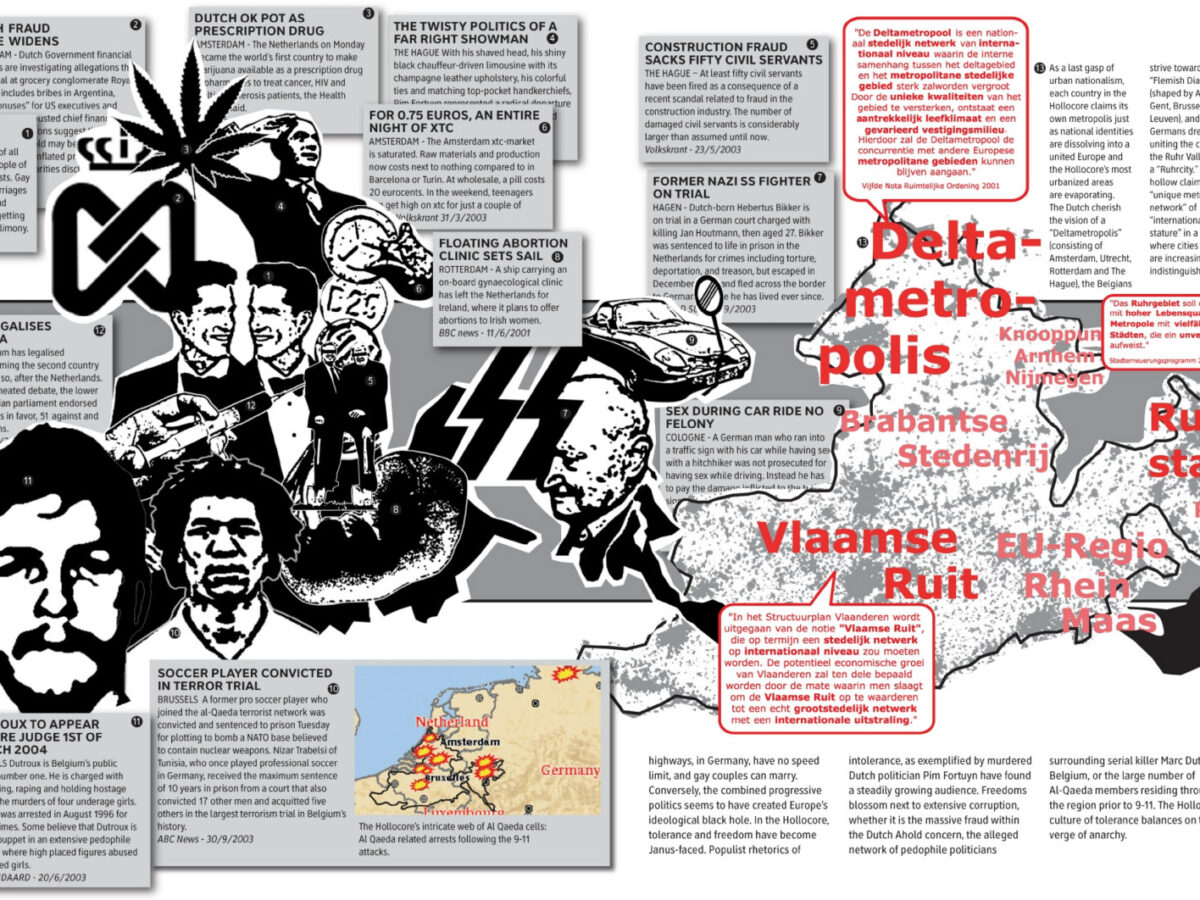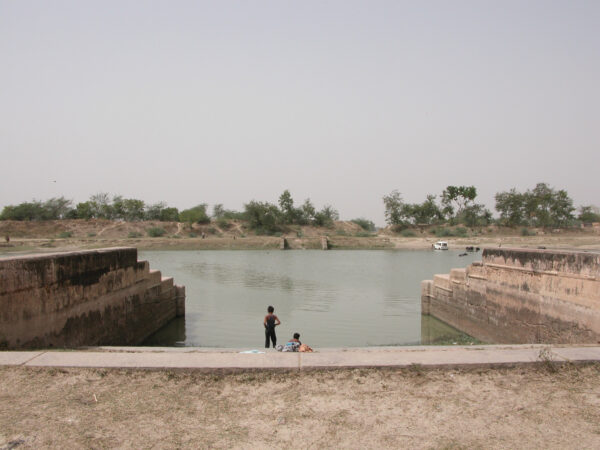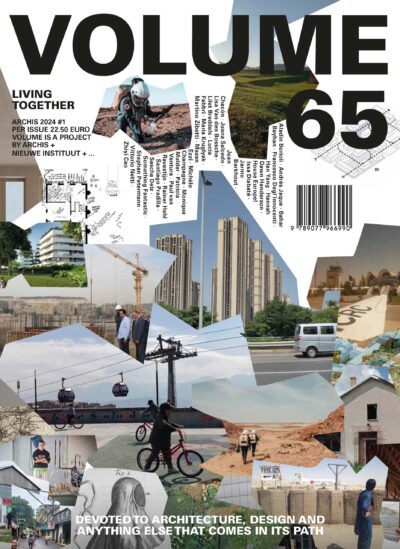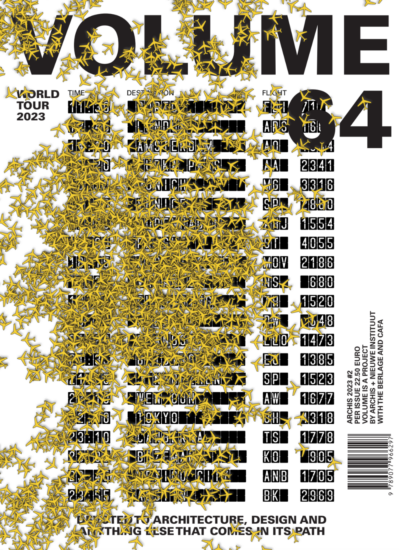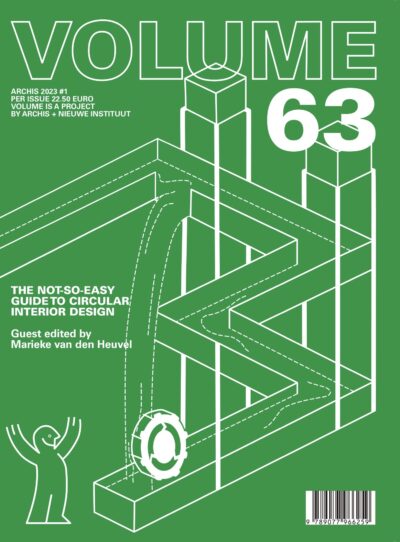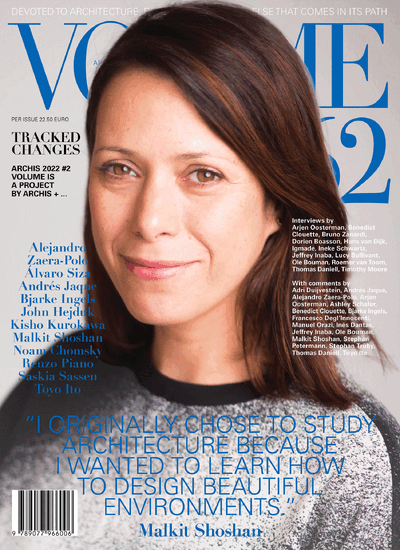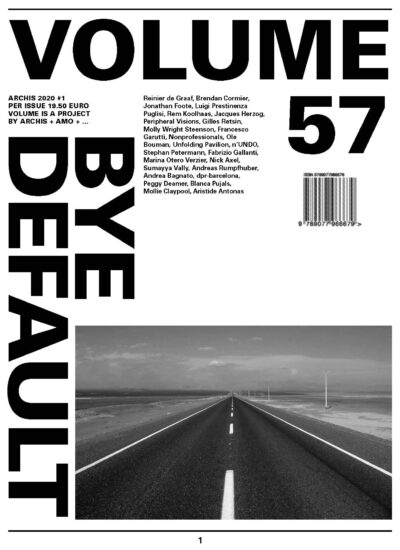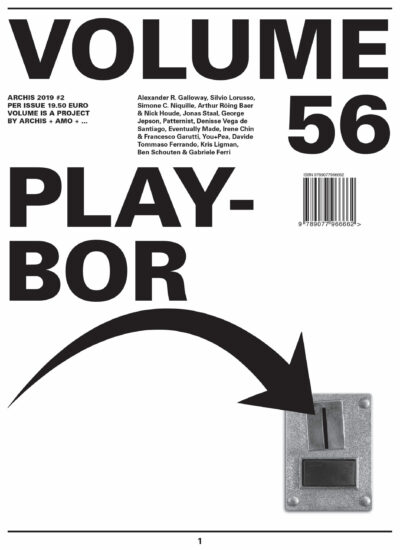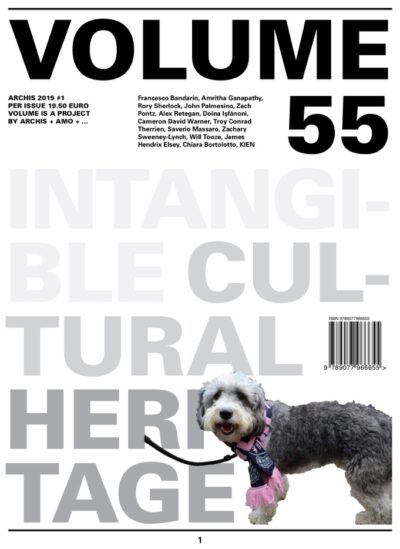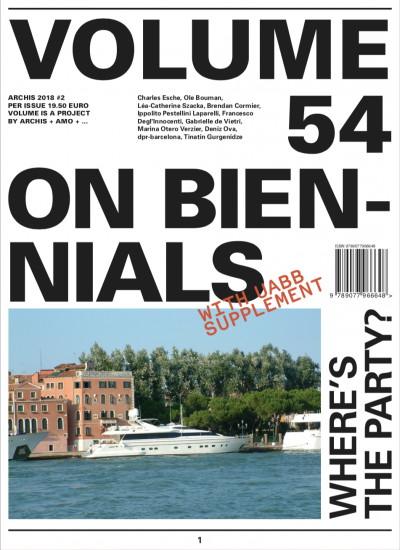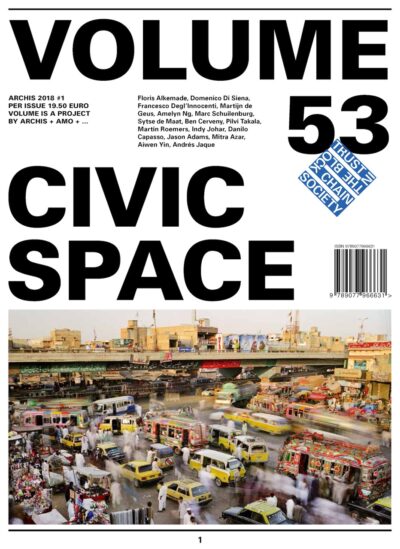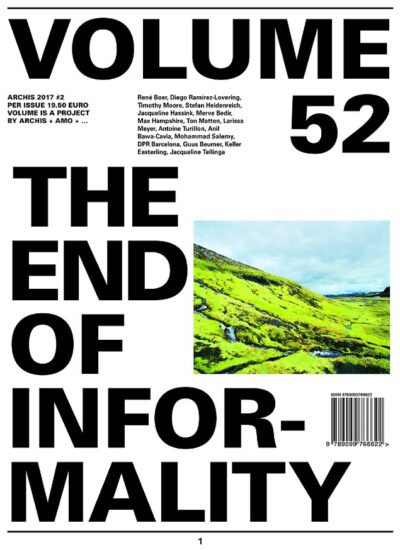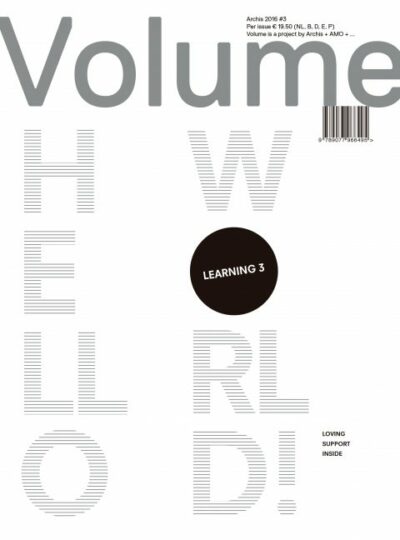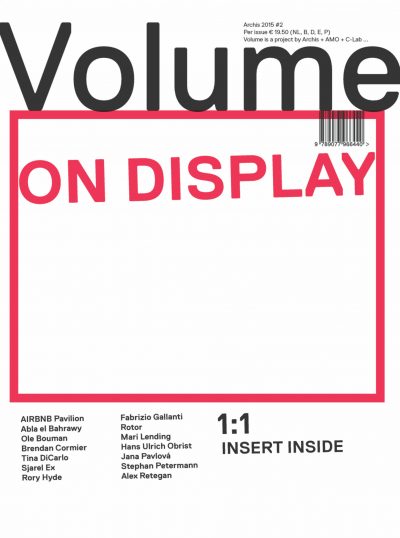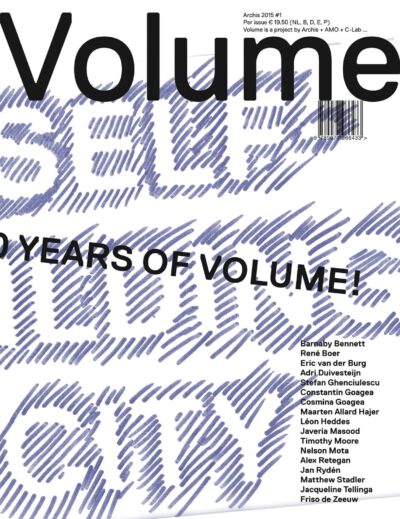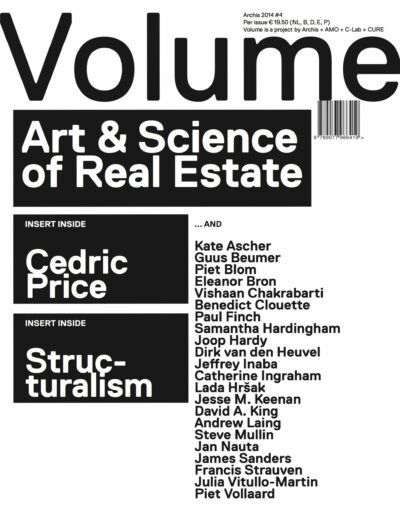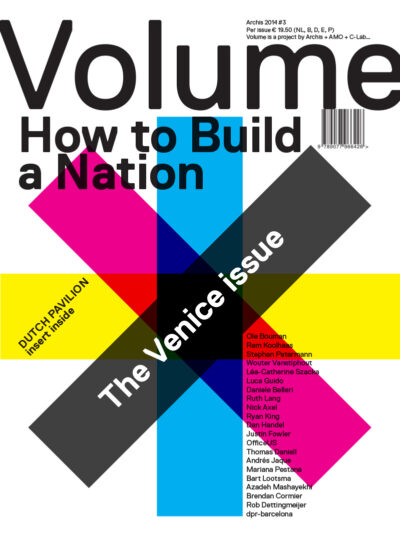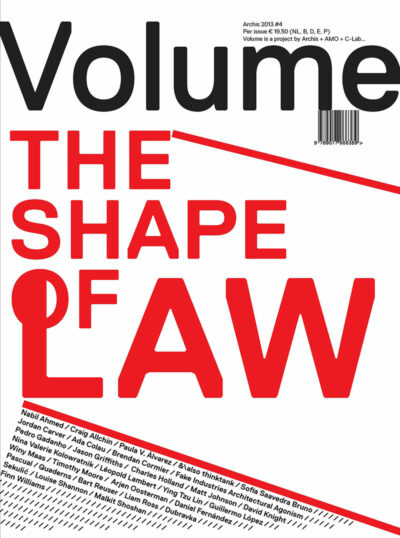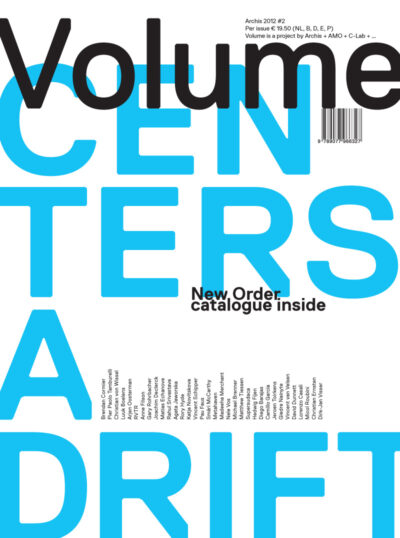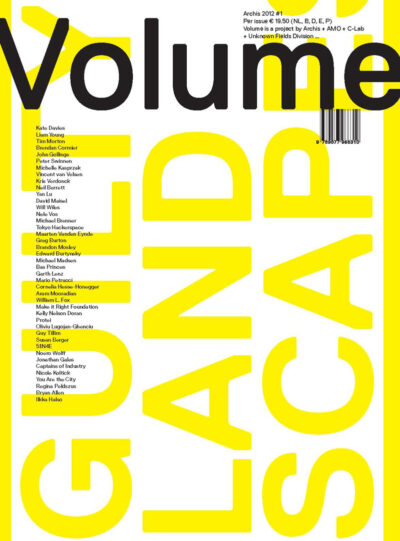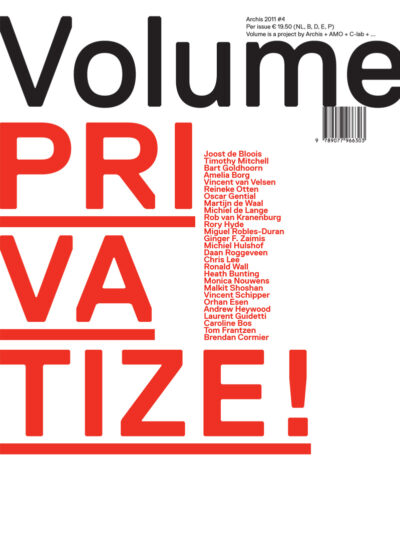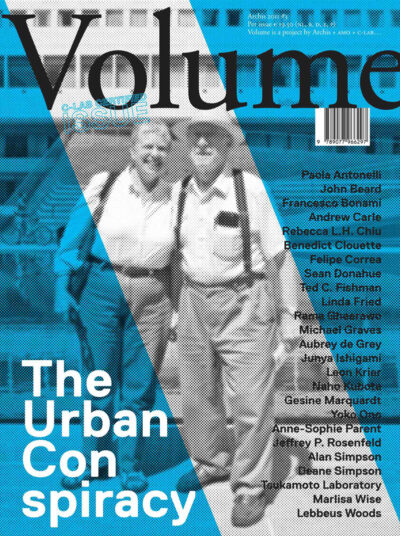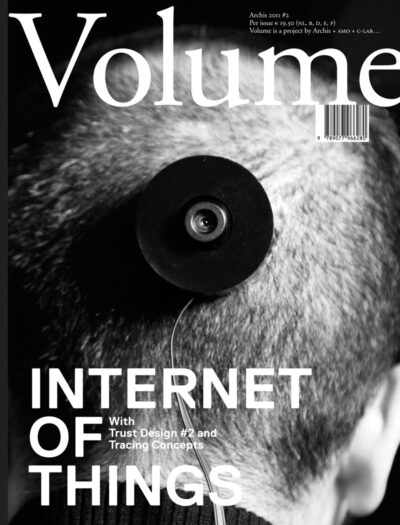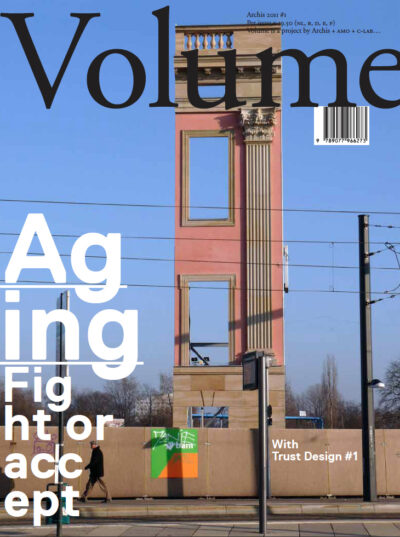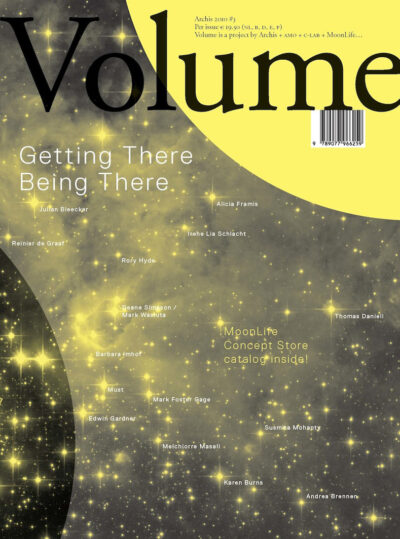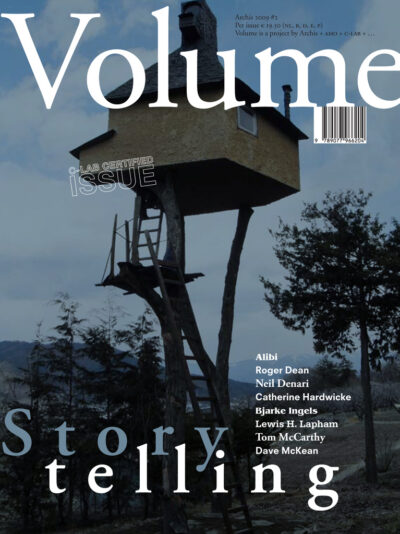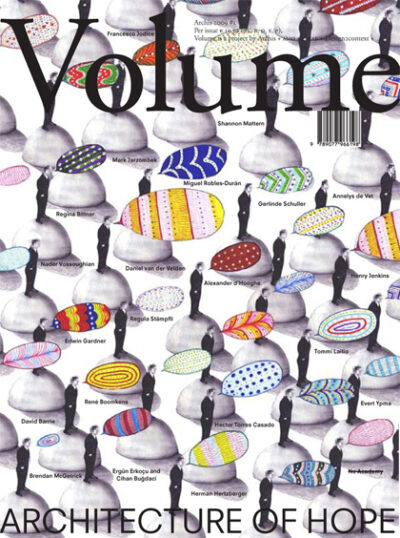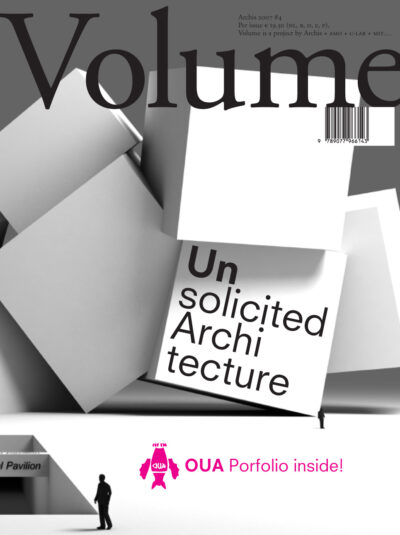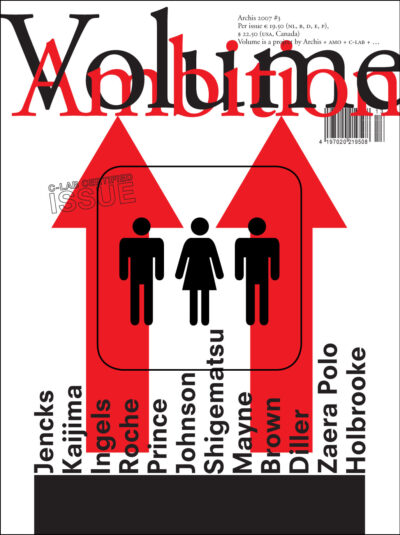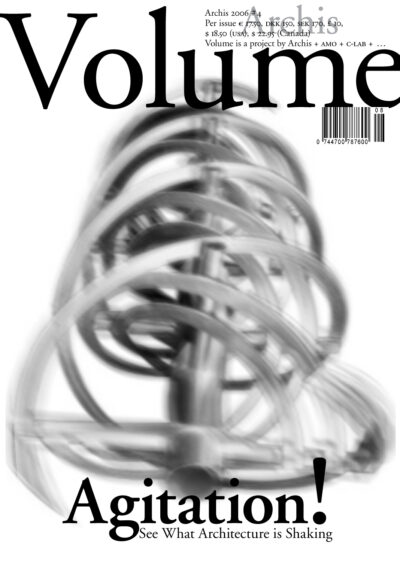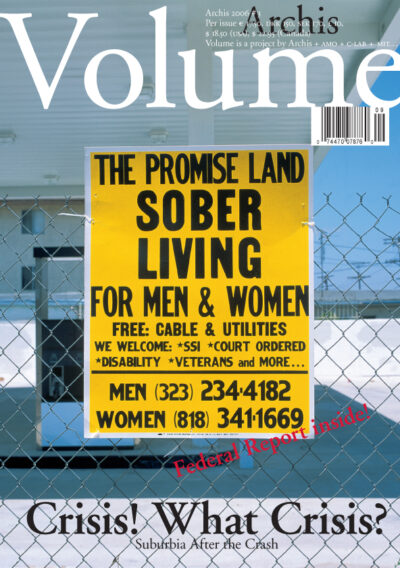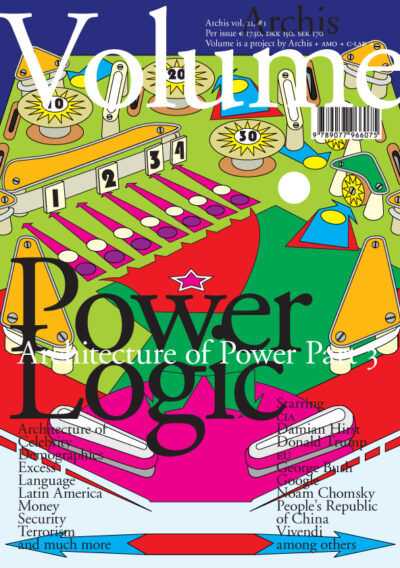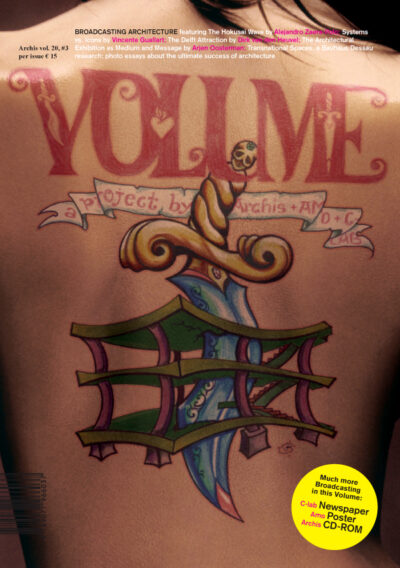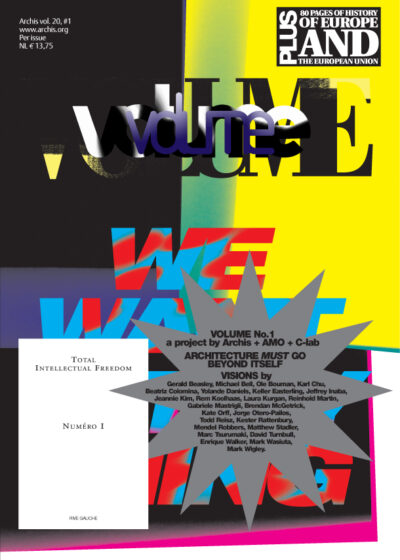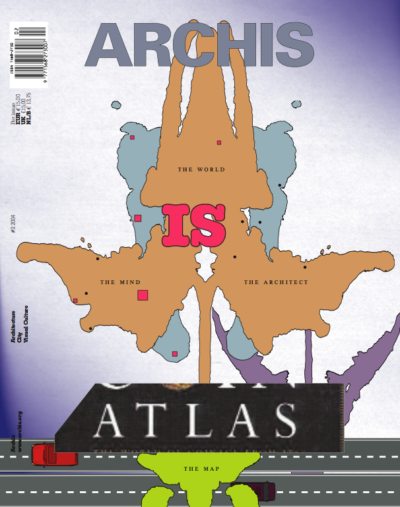48
The Research Turn
May 2016
Today it’s not so important what you know but rather how you think. Progress, in this sense, is predicated by critical reflection on ways of knowing and disciplinary traditions of thought. This issue of Volume – the second in our series on learning – is dedicated to mapping the contemporary field of research that is pushing processes of knowledge production forward in architecture, art and the social sciences.
Volume #48: The Research Turn is comprised entirely of interviews and conversations. We wanted to learn from those who have been instrumental in shifting the boundaries and shaping today’s landscape of creative knowledge production. The issue also includes the catalogue for BLUE: Architecture of UN Peacekeeping Missions by Malkit Shoshan, the Dutch contribution to the 15th Venice Architecture Biennale.
Buildings get built, inhabited, and begin to come undone. Political regimes rise, have their fun, and fall. The knowledge that goes into and comes out of such processes lives a different kind of life, though. Ideas are birthed, yet their death is an impermanent state of forget. Buildings can impress and politics can mobilize, but knowledge is wild; there’s no telling just what it will do. With immateriality comes a certain type of power, which industrialism has taught us can be wielded to virtuous effect of both benefit and harm. All it takes is setting our mind to it.
Research is conducted and used in countless ways, yet it tends to draw from the space it is performed within. Research produces knowledge, but often speaks to and acts upon disciplinary traditions of knowledge production. Take architecture, for instance: both Le Corbusier’s research into the architectural application of industrial processes and, following him, Robert Venturi, Denise Scott Brown and Steven Izenour’s research into American pop architecture led to radical transformations in the thought and practice of architecture. What we can witness in these two examples, which are just two of a countless many, is the way research reconfigured the relationship between what was considered to fall on either side of Architecture’s disciplinary border.
Contributors
Anthony Acciavatti & Vere van Gool, Dag Boutsen, Lex ter Braak, Beatriz Colomina, Reinier de Graaf, DUS Architects, Tim Ingold & Judith Winter, Adrian Lahoud, Chus Martínez & Sofia Lemos, John Palmesino, Stephan Petermann, Sarah Rifky & May al-Ibrashy, Irit Rogoff & Füsun Türetken, ruangrupa, Rural Urban Framework & Land+Civilization Compositions, Supersudaca & Francisco Díaz, Henk Slager, Territorial Agency, UNStudio, Eyal Weizman, Jan Peter Wingende
Details
Volume #48: The Research Turn
Editor-in-chief Arjen Oosterman
Designed by Irma Boom and Julia Neller
152 Pages
Soft-cover binding
ISSN 1574-9401
ISBN 9789077966488
